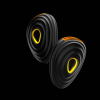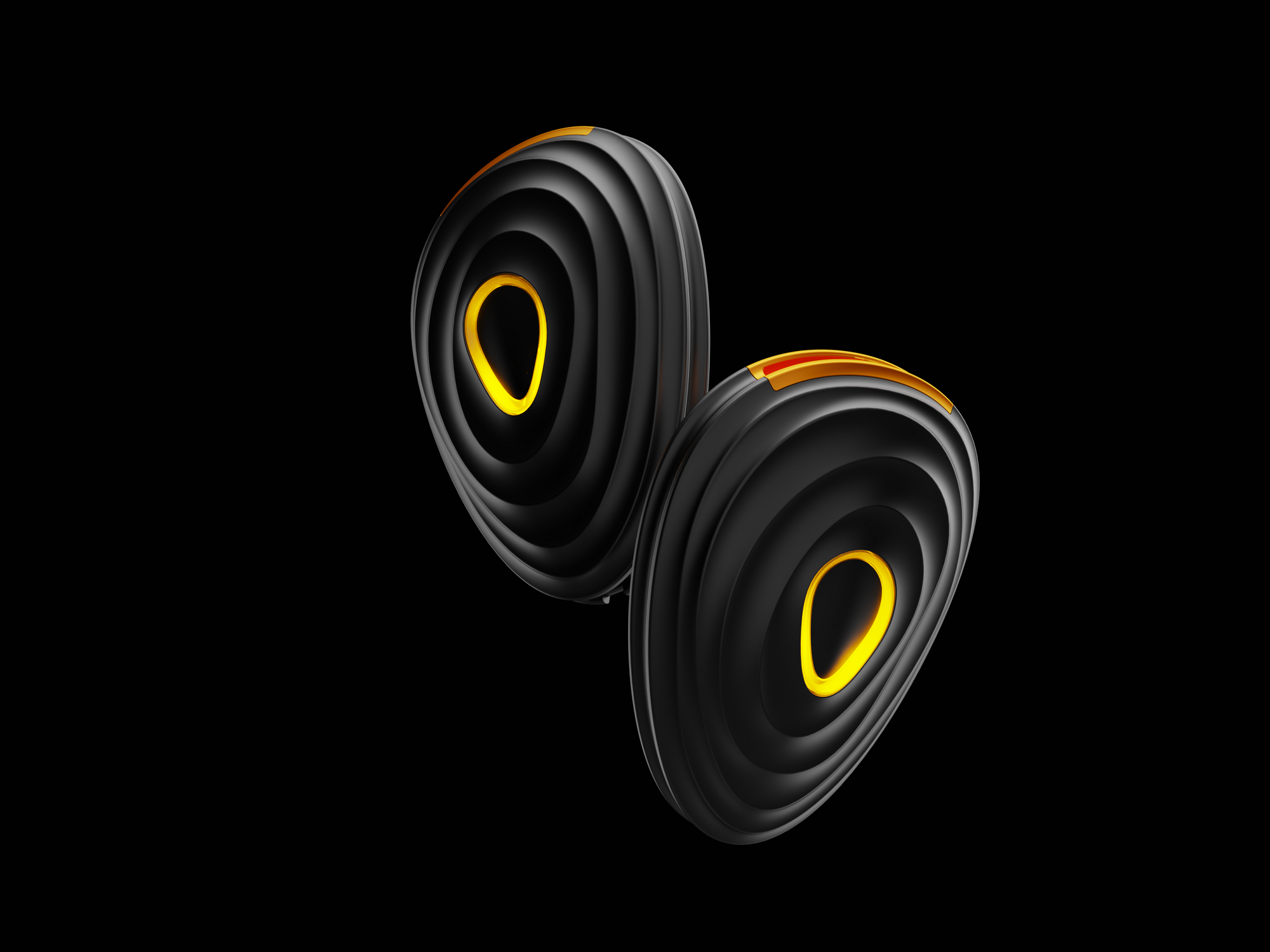Dieser Beitrag ist auch verfügbar auf: Deutsch
The question was obvious: what would be the advantages of wearing a Stryd on both shoes? Stryd provides the answer with the new Duo.
Note: I paid for the products for this article myself and there was no contact with the manufacturer. The article is freely written and reflects my personal experience only.
Inhalt / Content
Stryd Duo
Turning two into one
The Stryd Duo is not a new product in the sense of “hardware”. The tandem consists of two current Stryd NGs, which can be connected to form a Stryd Duo by means of a firmware update. In the same way, they can also be separated again and become two individual Stryd NGs. So there is always a way back.
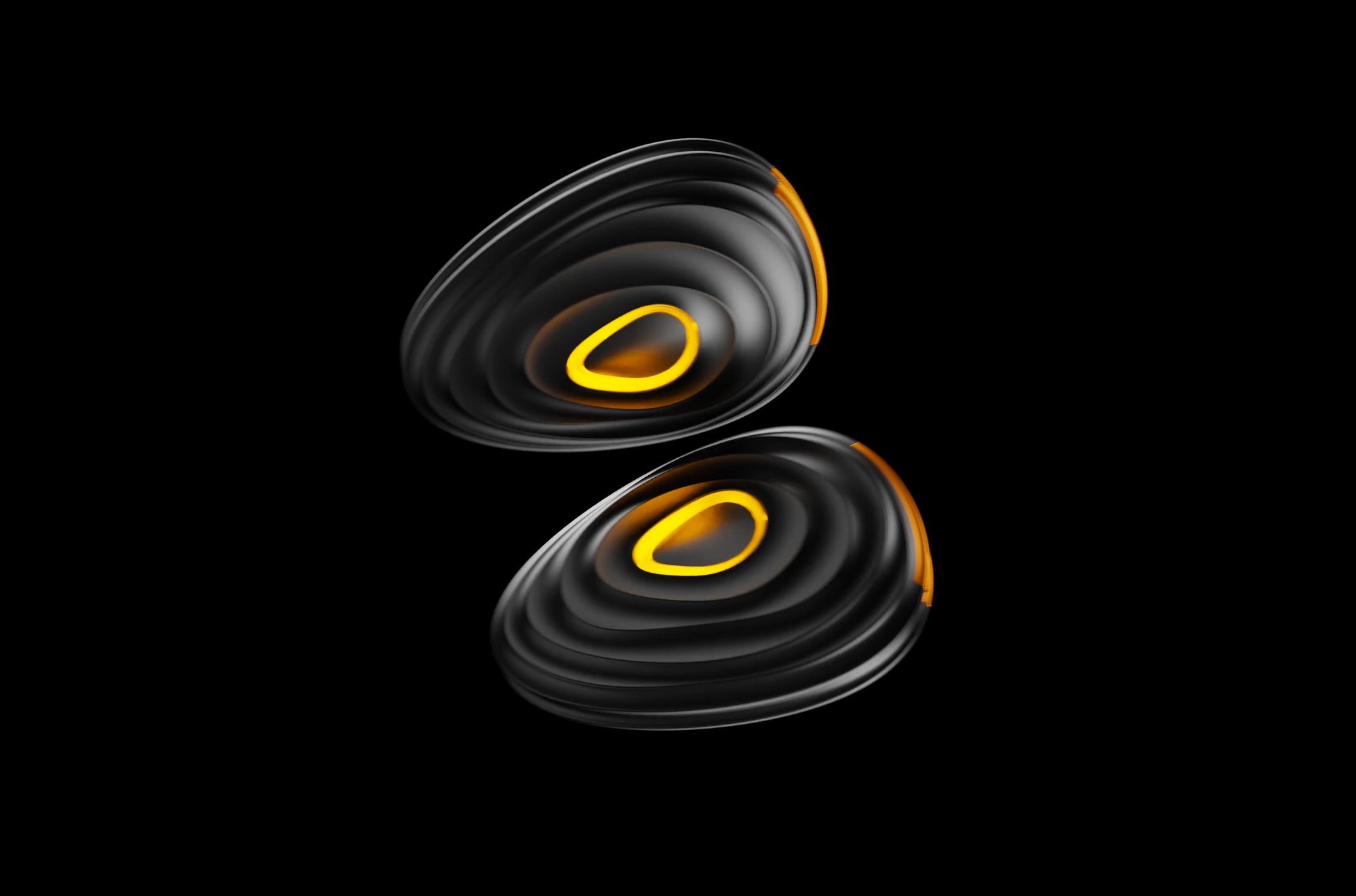
This also means that if you already own a Stryd NG, you don’t have to spend 350 euros on a Duo, but can add another NG to your setup for 270 euros. Anyone who is just entering the Stryd world with the Duo can therefore get the two footpods in a bundle for less.
Setup
The Stryd app on the mobile phone only changes in a few places when using a Stryd Duo. An icon on the home screen (top left) provides feedback on the charging status of the two Stryds and leads to the settings.
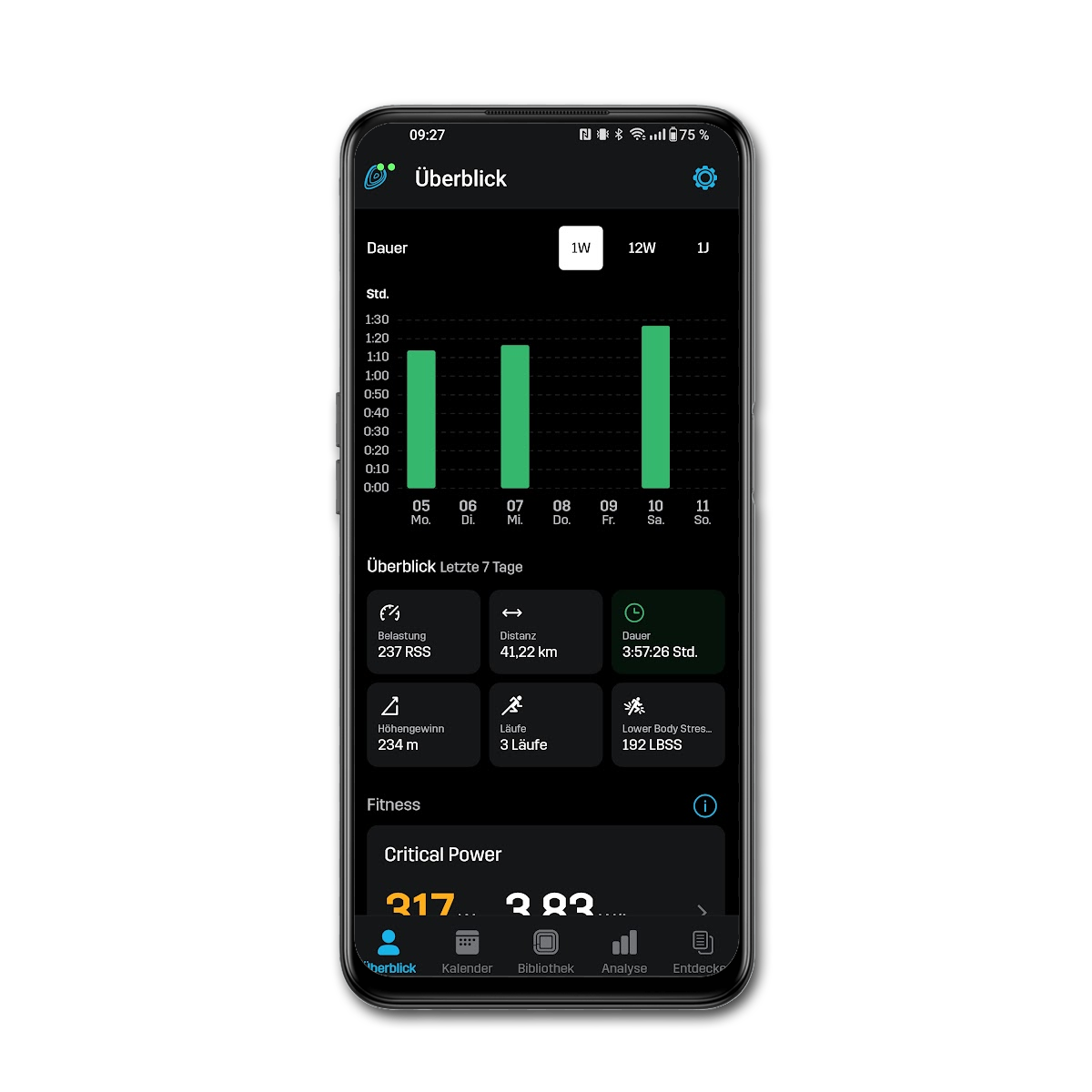
Here you can find information about the firmware status of the pods, the ANT ID and update the size and weight. A new addition here is the option of footpath synchronisation (more on this later).
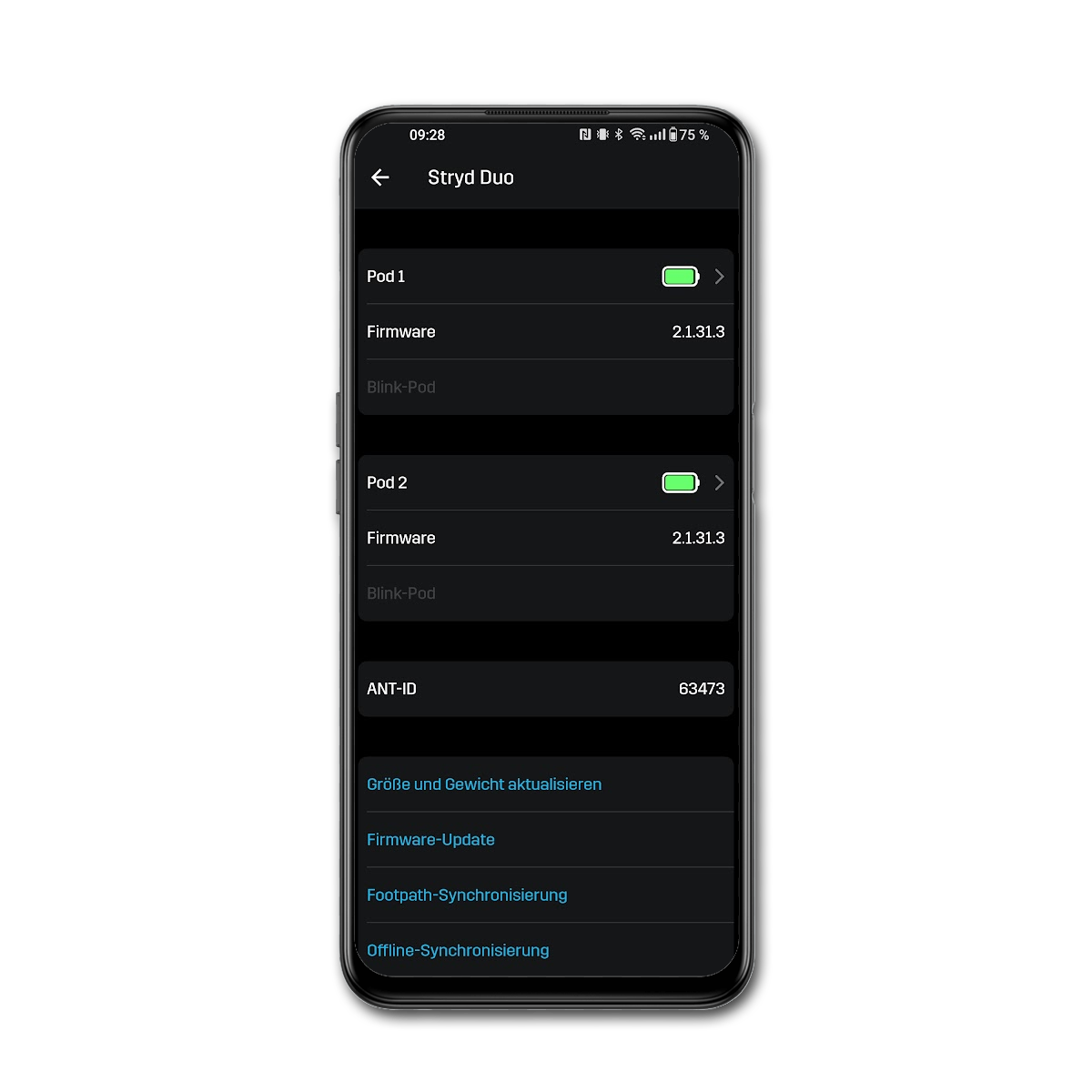
Information on the individual Stryd pods can be found one level deeper. With the Stryd Duo, it is important that both pods have the same model number. If you have bought a single pod with a model number below 27 and a new Stryd, you may have problems connecting the two pods. However, if you contact support in this case, you will receive an uncomplicated exchange. You are therefore guaranteed to receive a functional Stryd Duo.
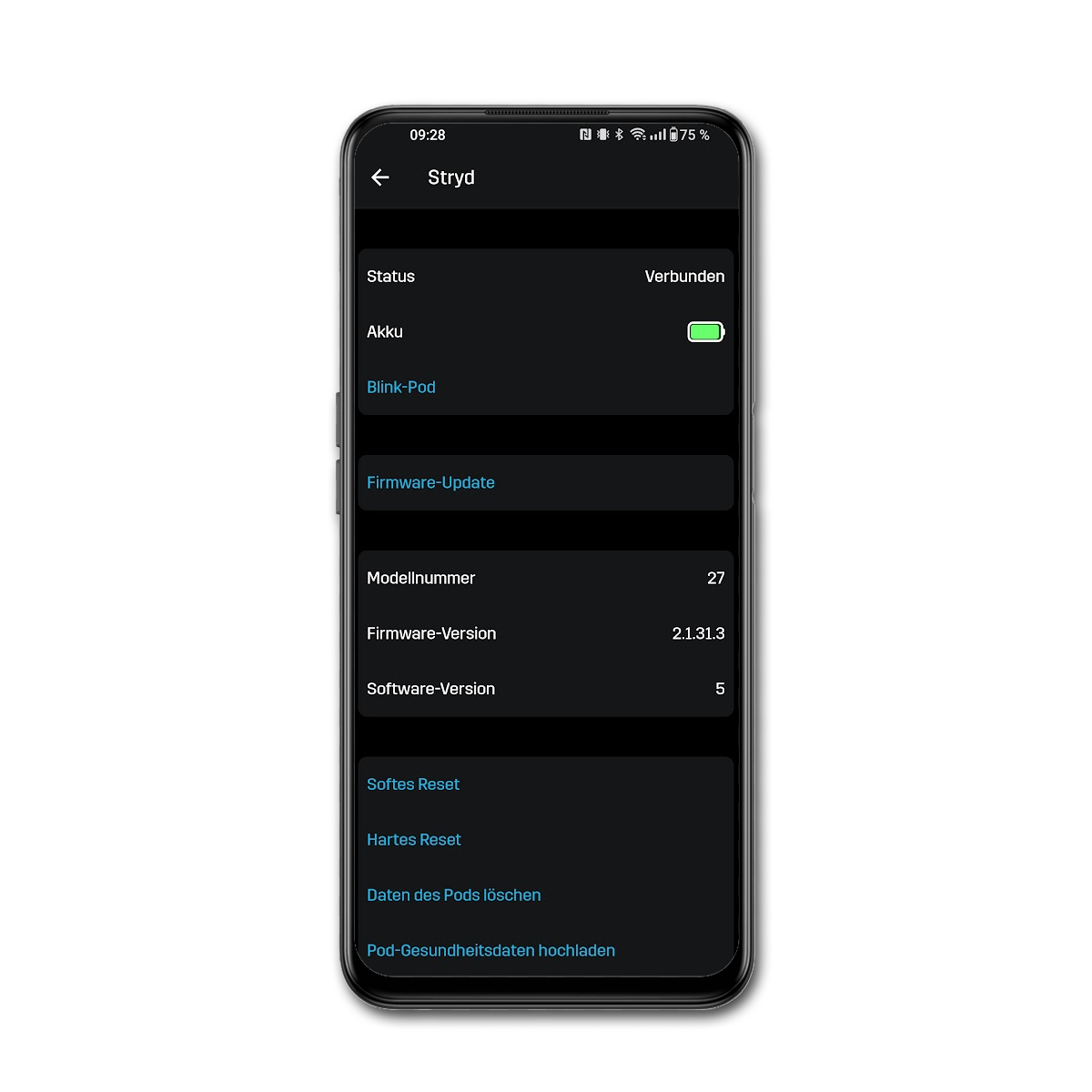
After connecting the two Stryds via the app, the new Stryd Duo receives the ANT ID of the first pod that the app found for this process. In any case, it is advisable to delete the connection to any existing Stryd NG on the watch and create a new connection to the Stryd Duo.
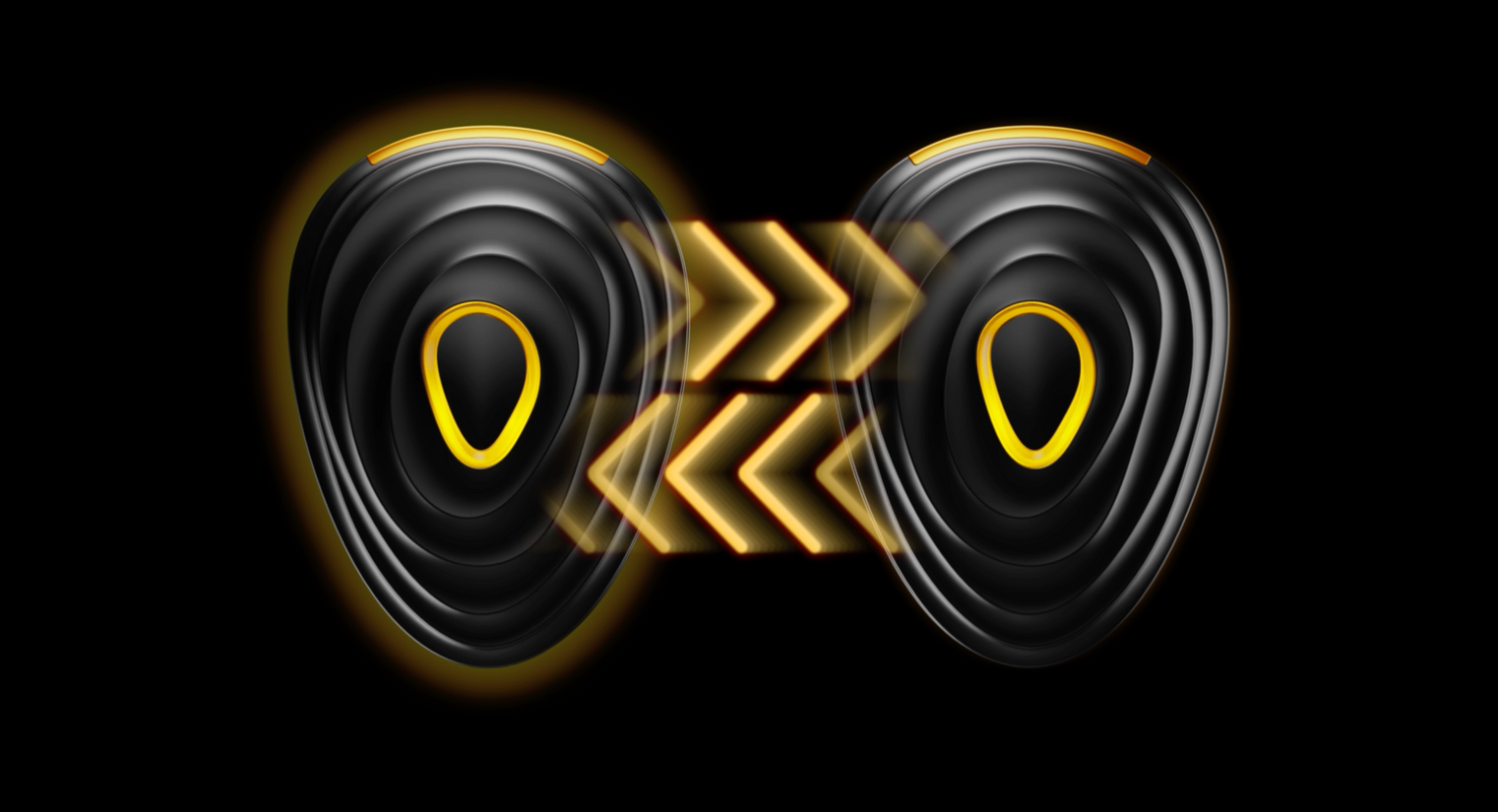
For running watches or apps, the Stryd Duo can also only be recognised as one (1) foot pod. One is therefore the master, takes care of the internal connection to the second pod and forwards the collected data to the outside. This makes handling much easier and ensures compatibility with all manufacturers that can connect a Stryd.
What’s new?
Two footpods instead of one naturally lead to twice as many measuring points and therefore to a higher stability of the data. At the same time, measuring both feet while running opens up new possibilities. The Stryd Duo therefore offers new metrics that primarily relate to the balance of existing values:
- Ground Contact Time Balance
- Vertical Ratio
- Vertical Oscillation Balance
- Leg Spring Stiffness Balance
- Impact Loading Rate Balance
This provides information on whether, for example, the ground contact time differs between the two feet and on which side it is longer or shorter. However, to get this data onto the platform, an offline sync is necessary after the run. In my case, it doesn’t even record the Stryd data field on a Garmin.
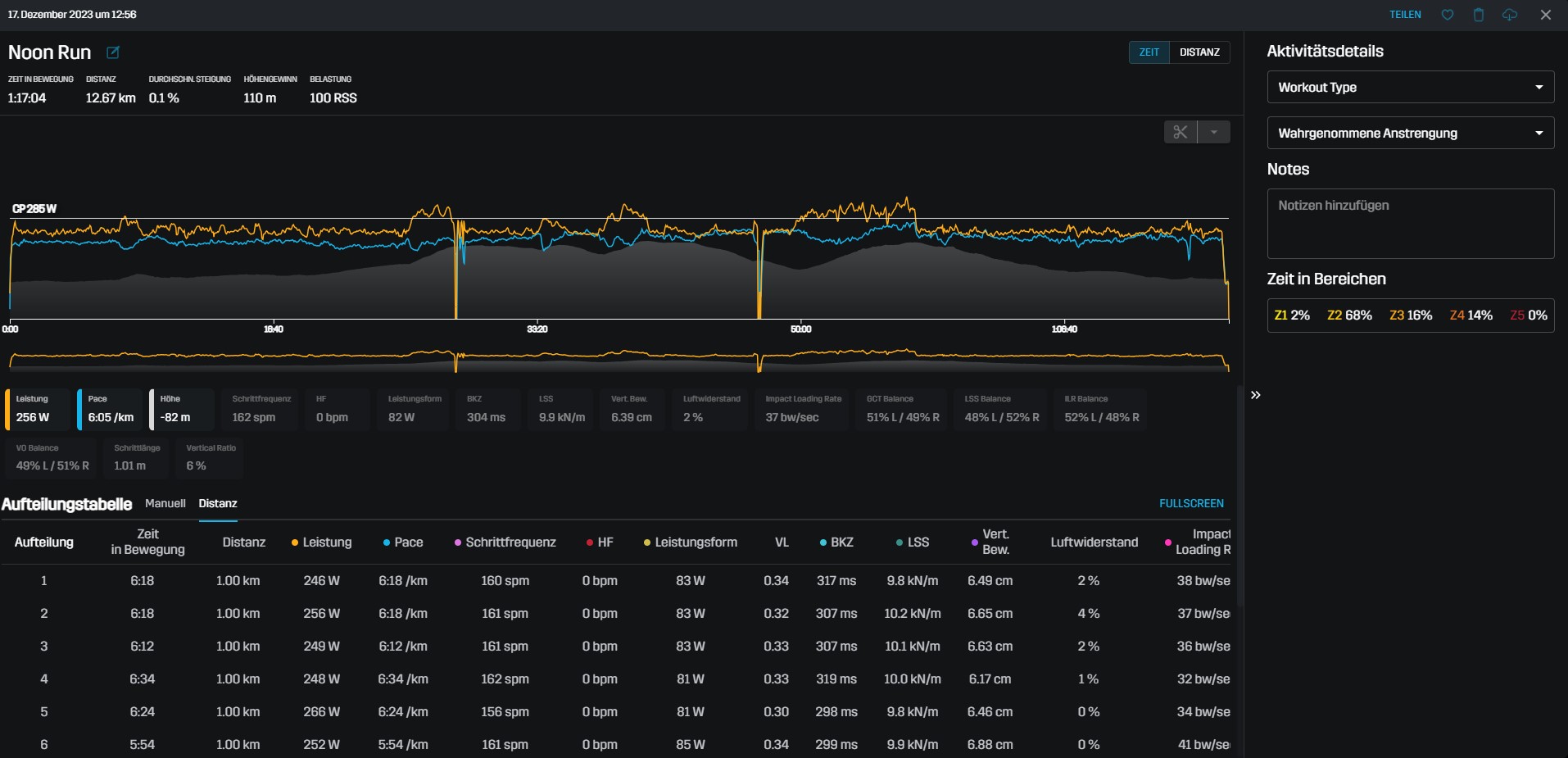
Stryd Footpath
However, the biggest new feature by far is the ability to graphically track the movement path of your feet while running. But Stryd Footpath is only available in the Powercenter and not in the app – and only if you pay for the Stryd subscription. After the purchase, you have at least a few months to look at the possibilities “free of charge”.
In order to get the necessary data onto the platform, however, manual synchronisation is also necessary here. Footpath synchronisation then really only transfers this data – if you use the offline sync, you still have to carry it out. Conversely, no footpath data is transferred during offline synchronisation. These are therefore two separate things.

In the Stryd Powercenter there is a new item “Footpath Visualisations” in the left-hand bar, which can be used to load a run from the calendar into the view. Days with footpath data are marked with a dot.
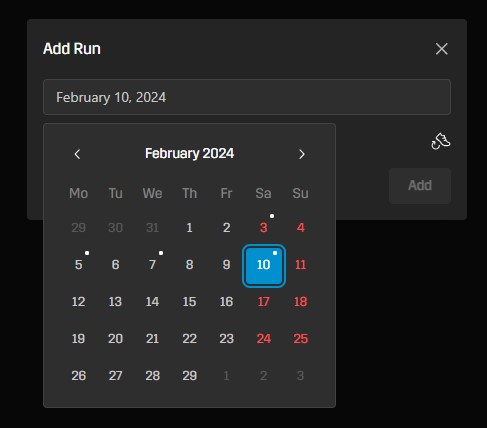
The footpath is then displayed as an “average” for the entire run. You can switch the view so that you can look at the course of movement from above, from the side or from behind.
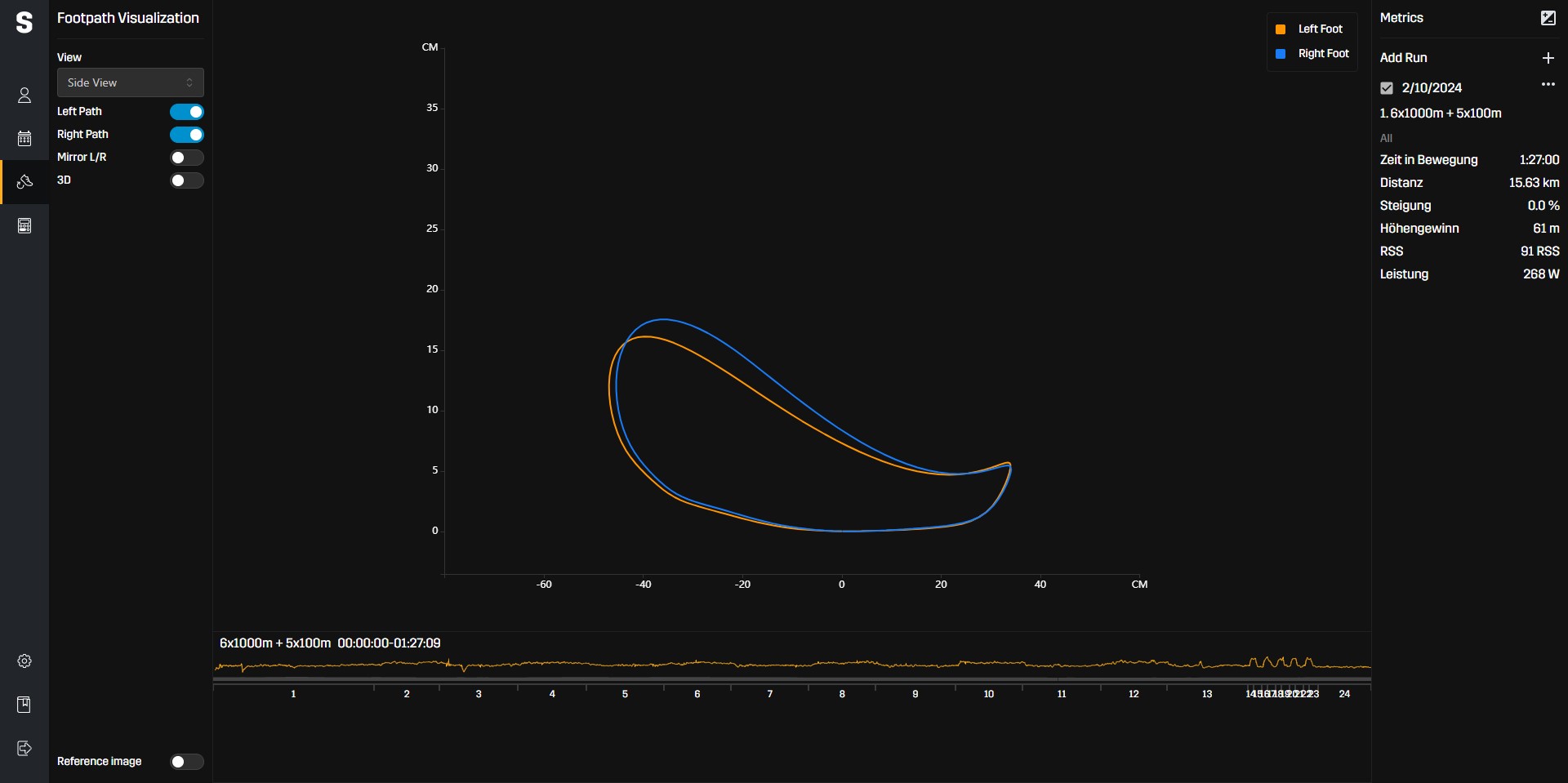


The option to view the footpath in 3D was recently added. You can then freely rotate and zoom the view, which is a much better representation of the footpath.
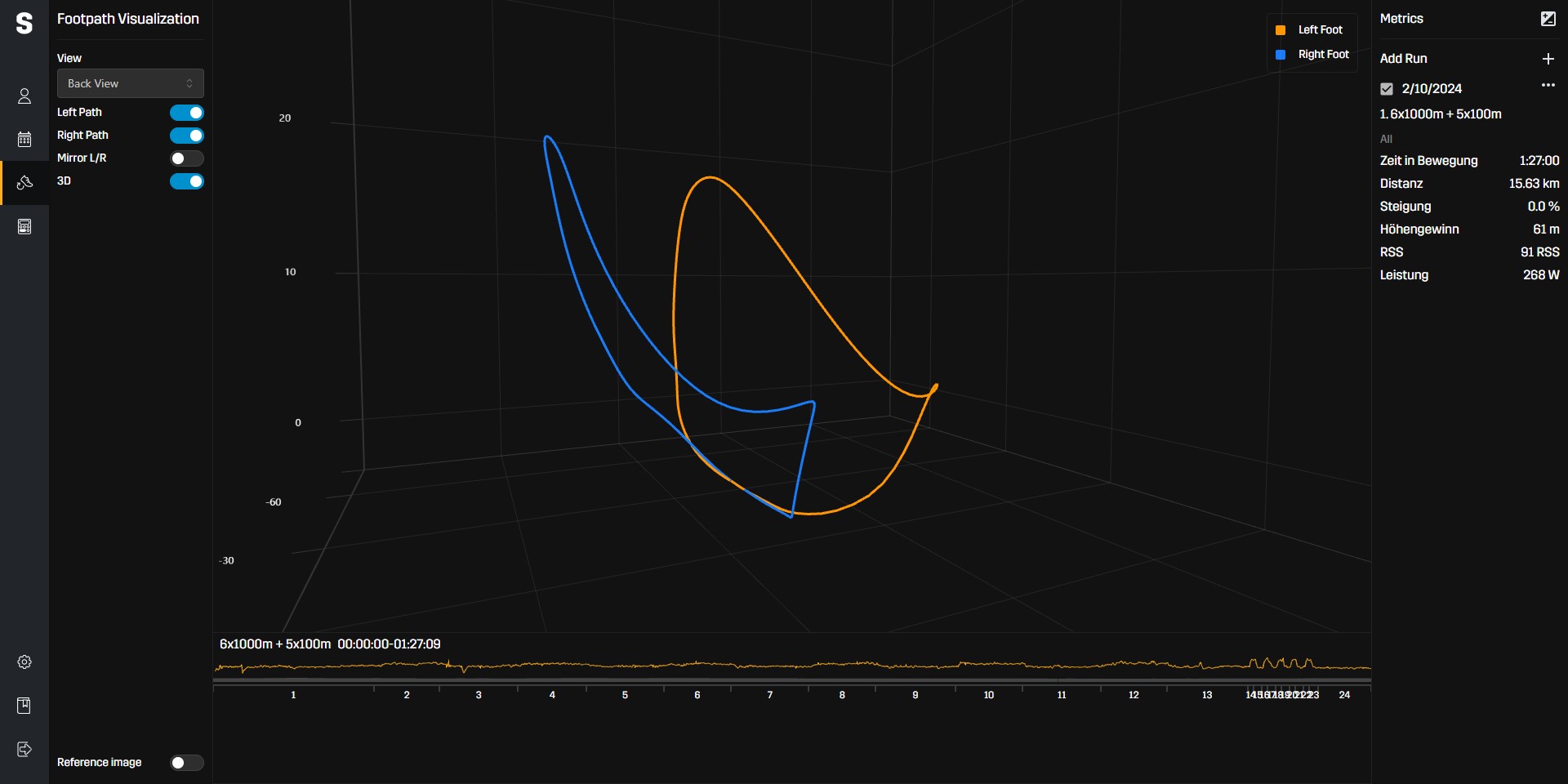
In addition, the time period to be displayed can be limited in order to analyse the change in the footpath over the run. And you can load a second run for comparison. This second run can also be the first run, so that different sections can be directly compared with each other.
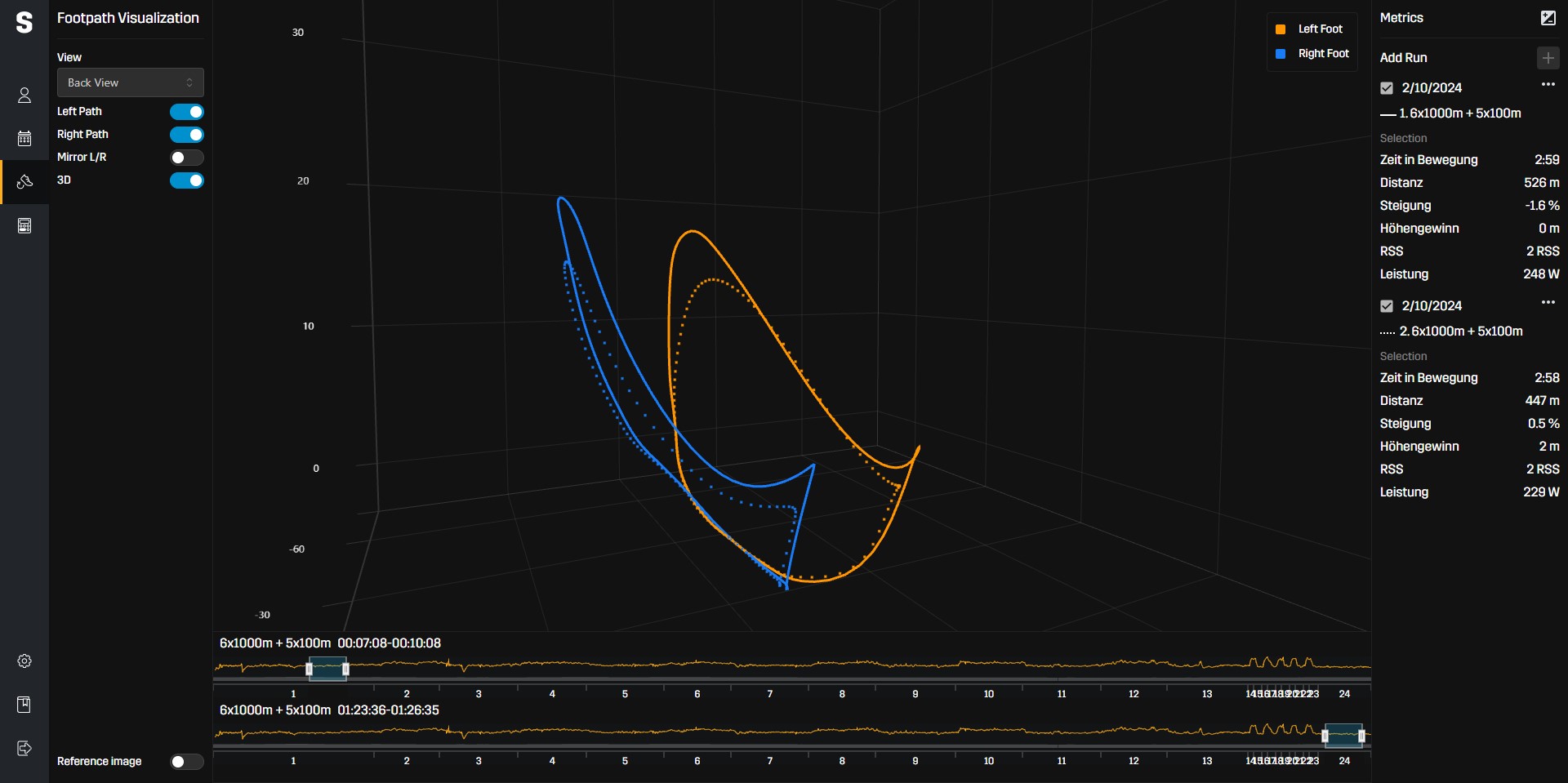
Here, for example, I have compared a relaxed section at the beginning and end of a run and you can see directly that I have probably not lifted my feet exactly as high.
Practical Experience
Of course, the first thing I was interested in was whether the power values of the Stryd Duo really matched those of a Stryd NG.

You can see small differences in the details (especially short peaks of the Stryd NG from time to time), but the display on the watch and the subsequent average values were always identical. So you can easily switch to the Stryd Duo without having to redetermine your critical power.
At the same time, however, I couldn’t recognise any advantages of the Stryd Duo when measuring watts alone: the higher number of data points may be reflected in the stability of the values, but not, for example, in the speed of reaction during sprints or similar. In any case, it makes no difference to me in everyday training.

As far as the additional metrics are concerned, I have to admit that apart from the pure watt value, none of the other figures have interested me so far. Although they are nice to observe, they don’t offer any active improvement potential for training. There is simply no guidance on which additional exercises would be useful at which value to compensate for any disadvantage.
That also applies in principle to the new balance values. Although I still recognise that they can provide information about an injury – and its progression. But even then, recognising a shift doesn’t help me at all to eliminate the cause. At least I can recognise whether the exercises I do and other changes in training gradually lead to the desired balance being restored.
That’s if a 50/50 balance is a reasonable goal at all. Of course, that’s what the values suggest. But with my slight scoliosis and pelvic torsion, I would be surprised if my ideal movement would lead to perfect balance in the values.

This question of “perfection” also arises with the Stryd Footpath. The forums and Facebook groups of Stryd Duo users are full of screenshots showing hardly any symmetrical lines. And everyone sees this as a flaw and is looking for instructions on how to compensate for its “obvious weakness”.
Stryd itself does not provide any assistance in interpreting the footpath. Neither an ideal path is described nor are if-then instructions offered. However, the change in the footpath can be used to determine injury, fatigue or the influence of different running shoes.
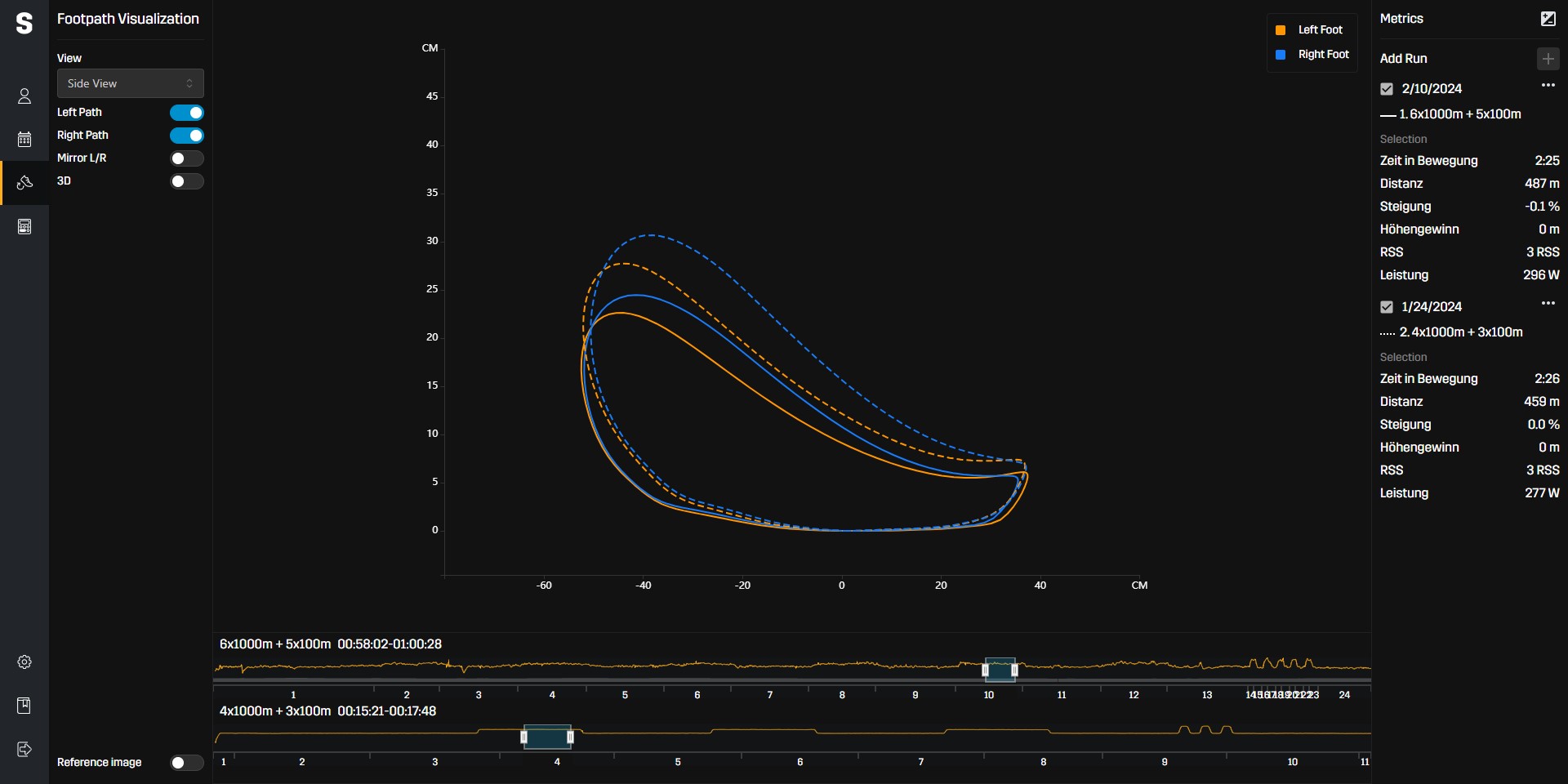
Fatigue is easy to read because the height of the foot lift changes over time during a long or intensive run. To be honest, I realised this even without the Stryd Duo… In detail, however, I could perhaps see that the decrease in the foot stroke decreases over time during similar runs and that a training effect could be deduced from this. But here too, I believe that the heart rate alone is just as helpful and also much better analysed.

The Footpath didn’t give me any insights when comparing shoes either. A minimal shoe like the Vivobarefoot leads to the same curves as a highly cushioned carbon shoe – except in small details. Sometimes it can be observed that the foot stroke is slightly different. But there are similar changes between similar runs with the same shoe.
I don’t want to rule out the possibility that there isn’t great potential in the footpath. If, for example, there was a study showing that a 1 centimetre higher foot lift leads to 1% energy savings when running and Stryd provides a table for the shoes assigned to the runs showing what the average lift is at what pace with the shoe, this could be used to make very specific, exciting decisions.
Conclusion
